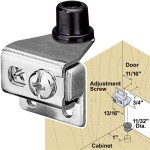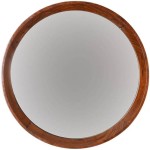How To Mirror iPad To Mac
Mirroring an iPad to a Mac can be a valuable tool for a variety of purposes. Whether for presenting content to a larger audience, recording screen activity for tutorials, or simply enjoying iPad content on a more comfortable display, mirroring offers increased flexibility and accessibility. This article provides a comprehensive guide on various methods available for mirroring an iPad to a Mac, outlining the steps, requirements, and potential benefits of each approach.
The ability to project an iPad's screen onto a Mac provides a convenient way to share information, collaborate on projects, or enjoy entertainment content. The following sections offer detailed explanations of popular and effective techniques for achieving this functionality.
AirPlay: Apple's Native Solution
AirPlay, Apple's proprietary wireless streaming protocol, offers a seamless and often the most straightforward method for mirroring an iPad to a Mac. It leverages the existing Wi-Fi network and Apple ecosystem for a smooth and integrated experience. However, system compatibility is crucial for AirPlay to function optimally.
To utilize AirPlay, both the iPad and the Mac must be connected to the same Wi-Fi network. This is the foundational requirement for establishing a connection between the devices. Ensure that the Wi-Fi network is stable and offers sufficient bandwidth for reliable streaming. A weaker network can lead to latency and interruptions in the mirrored display.
On the Mac, navigate to System Preferences/System Settings (depending on the macOS version). Locate and select the "Displays" preference pane. Within the Displays settings, look for the "AirPlay Display" option. If available, select the option to allow AirPlay connections from nearby devices.
On the iPad, swipe down from the top-right corner (or up from the bottom edge on older models) to open the Control Center. Locate the "Screen Mirroring" button, which typically features an icon of two overlapping rectangles. Tap the "Screen Mirroring" button to initiate the device search.
A list of available AirPlay-compatible devices on the network will appear. Select the Mac from this list. Upon selection, a passcode may appear on the Mac's screen. Enter this passcode on the iPad to authenticate the connection and initiate the mirroring process.
Once connected, the iPad's screen will be mirrored onto the Mac's display. The user can control the iPad as usual, and all actions will be reflected on the larger screen. During the mirroring session, the "Screen Mirroring" button in the iPad's Control Center will indicate an active connection.
To disconnect AirPlay mirroring, simply tap the "Screen Mirroring" button again in the iPad's Control Center and select "Stop Mirroring" or disconnect the Mac from the list of available devices. This will terminate the connection and return the iPad to its normal display mode.
Troubleshooting AirPlay connection issues generally involves verifying that both devices are on the same Wi-Fi network, ensuring that AirPlay is enabled in the Mac's System Preferences/System Settings, and restarting both the iPad and the Mac. Firewall settings on the Mac may also need to be adjusted to allow AirPlay traffic.
Using QuickTime Player for Wired Mirroring
QuickTime Player, a pre-installed application on macOS, offers an alternative method for mirroring an iPad to a Mac using a wired USB connection. This approach eliminates reliance on Wi-Fi and can provide a more stable and reliable connection, particularly in environments with congested wireless networks.
To utilize QuickTime Player for iPad mirroring, the user must first connect the iPad to the Mac using a Lightning or USB-C cable, depending on the iPad model. Ensure that the cable is properly connected to both devices and that the iPad is recognized by the Mac.
Open QuickTime Player on the Mac. Navigate to "File" in the menu bar and select "New Movie Recording." This will open the QuickTime Player recording window, typically displaying the Mac's built-in camera feed.
Next to the record button in the QuickTime Player window, there is a small arrow (or a dropdown menu depending on the macOS version). Click this arrow to reveal a list of available input sources. Select the iPad from the list of cameras. The iPad's screen should now appear in the QuickTime Player window, effectively mirroring the display.
While QuickTime Player is primarily a media player, acting as a mirroring solution is one of its versatile uses. The mirroring will continue as long as the QuickTime Player window is open and the iPad remains connected to the Mac via USB.
The advantage of this method is the stability of the connection provided by the wired link. It also has the benefit of being directly available through the Mac’s OS without relying on external software.
To stop mirroring, simply close the QuickTime Player window. This will terminate the connection and return the iPad to its normal display mode. Disconnecting the USB cable will also stop the mirroring process.
If the iPad is not recognized as an input source in QuickTime Player, ensure that the iPad is unlocked and that "Trust This Computer" has been selected on the iPad when prompted. Also, check the USB cable for damage and try using a different USB port on the Mac. Restarting both the iPad and the Mac can also resolve connectivity issues.
Third-Party Applications for Enhanced Features
Several third-party applications are available that offer advanced features and capabilities for mirroring an iPad to a Mac. These applications often provide functionalities beyond basic screen mirroring, such as screen recording, annotation tools, and remote control options.
One popular option is Reflector. Reflector allows the Mac to act as an AirPlay receiver, allowing for more robust compatibility with different iOS devices and offering additional features such as device framing and highlighting. The application typically requires a one-time purchase or subscription fee.
Another option is AirServer. AirServer provides similar functionality to Reflector, allowing the Mac to receive AirPlay streams from the iPad. It also offers features such as password protection for AirPlay connections and the ability to record mirrored sessions.
Sidecar, a feature built into macOS Catalina and later, allows a compatible iPad to be used as a secondary display for the Mac. While not strictly mirroring, Sidecar effectively extends the Mac's display onto the iPad, allowing for increased screen real estate and enhanced productivity. Sidecar can be accessed through the Displays preference pane in System Preferences/System Settings.
When choosing a third-party application for iPad mirroring, consider the specific features and capabilities required, the compatibility with the iPad and Mac models, and the pricing structure of the application. Reading reviews and trying free trials (if available) can help in making an informed decision.
The implementation of these third-party applications varies depending on the software. Generally, the user needs to download and install the application on the Mac, then follow the on-screen instructions to connect the iPad. The connection process may involve enabling AirPlay on the iPad or establishing a USB connection.
These applications enhance the mirroring process by providing increased options. Some may be designed more for professional presentations while others cater to specific recording or streaming needs. The specific applications installed will rely on the intended use of the user.
Troubleshooting issues with third-party mirroring applications generally involves checking the application's documentation and support resources, ensuring that the application is up-to-date, and verifying that the iPad and Mac meet the application's system requirements. Also, checking firewall settings and network configurations is necessary to ensure proper connectivity.

Best And Easy Ways To Mirror Mac Ipad

How To Share Ipad Screen On Mac Via Usb Or Wifi

3 Ways To Share An Ipad Screen On A Mac 2024 Movavi

Use Your Ipad As A Second Display For Mac With Sidecar Mathematics It

Use An Ipad As A Second Display For Mac Apple Support Vn

2024 How To Mirror Ipad Mac Wireless Methods

Using Ipad As Second Monitor Computer Repair Blog

Use Ipad As A Second Display For Your Mac Apple Support In

How To Mirror A Mac An Ipad

How To Screen Mirror Ipad Mac With Ipados 15








